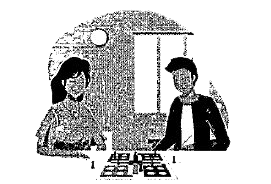Sherlin and Danju are playing Ludo at home during Covid-19. While rolling the dice, Sherlin's sigter Raji observed and noted the possible outcomes of the throw every time belongs to set {1, 2, 3, 4, 5, 6). Let A be the set of players while B be the set of all possible outcomes.

Let R:B→ be defined byR={(1,1),(1,2),(2,2),(3,3),(4,4),(5,5),(6,6)}, then R is:
Symmetric
Reflexive and Transitive
Transitive and symmetric
Equivalence
The correct Answer is:B
Topper's Solved these Questions
- RELATIONS AND FUNCTIONS BOOK - ICSECHAPTER - RELATIONS AND FUNCTIONS EXERCISE - MULTIPLE CHOICE QUESTIONS (ASSERTION AND REASON BASED QUESTIONS)
7 Videos
- QUESTION PAPER-2018BOOK - ICSECHAPTER - QUESTION PAPER-2018EXERCISE - Section -C
8 Videos
- SAMPLE PAPER - 4 BOOK - ICSECHAPTER - SAMPLE PAPER - 4 EXERCISE - Questions (Section C)
8 Videos
Similar Questions
Sherlin and Danju are playing Ludo at home during Covid-19. While rolling the dice, Sherlin’s sister Raji observed and noted the possible outcomes of the throw every time belongs to set {1,2,3,4,5,6}. Let A be the set of players while B be the set of all possible outcomes.

A = {S, D}, B = {1,2,3,4,5,6}
Let R:B→B be defined by R={(1,1),(1,2), (2,2), (3,3), (4,4), (5,5),(6,6)}, then R is
View SolutionSherlin and Danju are playing Ludo at home during Covid-19. While rolling the dice, Sherlin’s sister Raji observed and noted the possible outcomes of the throw every time belongs to set {1,2,3,4,5,6}. Let A be the set of players while B be the set of all possible outcomes.

A = {S, D}, B = {1,2,3,4,5,6}
Let R be a relation on B defined by R = {(1,2), (2,2), (1,3), (3,4), (3,1), (4,3), (5,5)}. Then R is
View Solution
Knowledge Check
Let R be a relation in the set {1,2,3,4} given by R = {(1,1),(1,2),(2,2),(4,4),(1,3),(3,3),(3,2)}
/ Choose the correct option.AR is reflexiveBR is transitiveCR is symmetricDR is reflexive and transitive but not symmetricLet P={1, 2, 3} and a relation on set P is given by the set R={(1,2),(1,3),(2,1),(1,1),(2,2),(3,3),(2,3)}. Then R is:
Areflexive, transitive but not symmetricBSymmetric, transitive but not reflexiveCSymmetric, reflexive but not transitiveDNone of the aboveLet P = {1,2,3} and a relation on set P is given by the set R = {(1,2),(1,3),(2,1),(1,1),(2,2),(3,3),(2,3)} Then, R is
Areflexive, transitive but not symmetricBsymmetric, transitive but not reflexiveCsymmetric, reflexive but not transitiveDNone of the above
Sherlin and Danju are playing Ludo at home during Covid-19. While rolling the dice, Sherlin’s sister Raji observed and noted the possible outcomes of the throw every time belongs to set {1,2,3,4,5,6}. Let A be the set of players while B be the set of all possible outcomes.

A = {S, D}, B = {1,2,3,4,5,6}
Let R:B→B be defined by R={(x,y):y in divisible by x} is
View SolutionSherlin and Danju are playing Ludo at home during Covid-19. While rolling the dice, Sherlin’s sister Raji observed and noted the possible outcomes of the throw every time belongs to set {1,2,3,4,5,6}. Let A be the set of players while B be the set of all possible outcomes.

A = {S, D}, B = {1,2,3,4,5,6}
Raji wants to know the number of relations possible from A to B. How many numbers of relations are possible?
View SolutionSherlin and Danju are playing Ludo at home during Covid-19. While rolling the dice, Sherlin’s sister Raji observed and noted the possible outcomes of the throw every time belongs to set {1,2,3,4,5,6}. Let A be the set of players while B be the set of all possible outcomes.

A = {S, D}, B = {1,2,3,4,5,6}
Raji wants to know the number of functions from A to B. How many number of functions are possible?
View SolutionLet R={(1,3),(4,2),(2,4),(2,3),(3,1)} be a relation the set A={1,2,3,4} . The relation R is
View SolutionLet S be set of all numbers and let R be a relation on S defined by aRb⇔a2+b2=1 then, R is
View Solution
